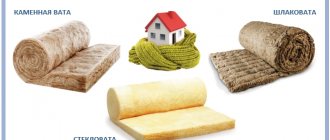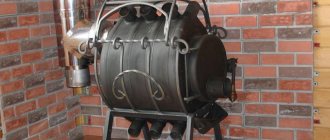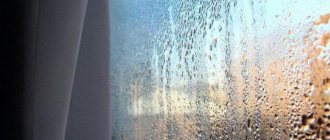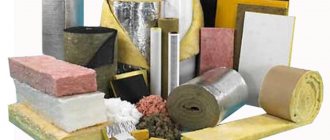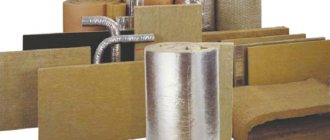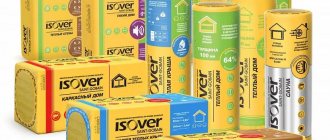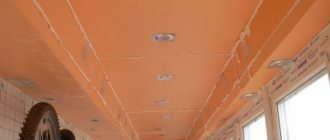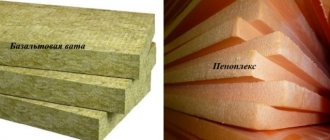Roll and slab insulation materials are used today in almost all areas of construction - from residential to industrial. Among the most popular and inexpensive solutions is mineral wool, the health hazards of which are sometimes the reason that people prefer to live in less comfortable temperature conditions. But is the widely used insulation really that dangerous and is it worth limiting yourself in comfort for fear of harming your own health?
Mineral wool - should you be afraid of it?
What does mineral wool consist of?
Many say that mineral wool causes serious harm to health. How true this statement is can only be said after studying the composition of the basalt-based material. It consists of several components:
- bases - fibers obtained by melting rocks;
- binder resins capable of forming the required shape of the material - roll or slab;
- impregnations that make mineral wool impervious to external influences.
Glass wool, which is based on a mixture of broken glass, limestone, and quartz glass, also belongs to the category of mineral wool. The mixture is melted and inflated with steam to obtain the finest air threads, allowing the insulation to recover after compression.
The material has a number of advantages that make it one of the industry leaders, namely:
- low thermal conductivity - from 0.035 to 0.042 W/mK;
- reduced moisture saturation coefficient (up to 1%);
- no shrinkage during long-term use;
- durability.
The stone base is environmentally friendly and does not have any harmful effects on the human body. Basalt, most often used in the manufacture of insulation, is even used in the medical field, which indicates its safety. Resins and impregnations, if the manufacturing and installation technology is not followed, can negatively affect health, but how serious will this impact be?
How does mineral wool affect the health of household members and insulation workers?
What is the safest insulation
Ursa PureOne – formaldehyde-free, acrylic based.
There is no point in determining which insulation is safe for health among natural materials, so only modern insulation of artificial origin should be considered. The most used thermal insulation materials:
- mineral wool;
- Styrofoam;
- polyurethane foam.
Typically, the manufacturers of each of the materials presented above claim that their insulation is safe for health. In fact, this is true, and disputes regarding the safety of a particular material revolve mainly around the components from which the insulation is made. It is also important how the insulation behaves under different operating conditions. For example, polystyrene foam is harmful as insulation if it is heated. During the process of melting or burning, it emits toxic gases, just like polyurethane foam. PPU is nothing more than a modified polystyrene foam, its improved descendant, so to speak.
If we consider the components of which insulation are absolutely safe for health, then you cannot find better mineral wool from Ursa from the PureOne line:
- made from quartz sand;
- does not contain formaldehyde - acrylic-based binder;
- soft fibers that do not break or create dust;
- does not irritate the skin - the color and texture is similar to cotton.
In addition, this material does not burn and can withstand temperatures above 800 degrees, which significantly expands the scope of its application.
Myth No. 1. Toxic substances in the environment
Excellent thermal insulation, excellent sound insulation properties, effective fire protection. Such attractive properties make mineral wool popular. But today it is customary to care not only about the comfort of household members, but also about the environment in general. Every conscious person thinks about the impact that the materials used when building a house or renovating an apartment will have on the environment.
The binders in mineral wool are phenolic resins, which can release toxic substances. Phenol when ingested:
- affects the brain, provoking short-term excitement and subsequent loss of strength;
- provokes headaches;
- causes coughing and other problems in the respiratory system, including respiratory arrest;
- promotes attacks of nausea and vomiting;
- leads to convulsions, fainting, damage to the cornea of the eyes, surges in blood pressure;
- causes the growth of malignant tumors;
- may cause the birth of children with mental or physical retardation.
But their mass fraction of phenol in the material is so small (1-2%) that in order to cause damage to health, you need to try hard. However, manufacturers take into account the opinions of their customers who fear that the material is harmful. Poisonous binders are not only contained in cotton wool in negligible quantities, but are also in a polymerized state, which does not pose a danger to human health. Today they have begun to produce mineral wool, which instead of phenol contains completely safe and environmentally friendly bitumen.
The second thing that scares opponents of using mineral wool for insulation is formaldehyde, the permissible concentration of which per 1 cubic meter should not exceed 0.05 mg. Low-quality basalt insulation or glass wool can produce up to 0.02 mg of formaldehyde per square meter of insulated surface per hour. In addition, this poison is released by many finishing materials and furniture. This can lead to oversaturation of the air with poison, which can lead to irreversible damage in the human body, for example, cause infertility.
“Phenol-free” mineral wool from Knauf
Harm of mineral wool
So, let’s try to answer the most important and troubling question: is mineral wool harmful to people’s health or not?
Few people think about this issue when purchasing apartments where mineral wool is used as insulation. Professionals say that cotton wool contains toxic substances that are very dangerous for people.
The scientists who conducted the research shared very disappointing results - this insulation uses phenol as elements that bind the fibers together. It is a dangerous carcinogen.
People who live in houses insulated with mineral wool are susceptible to inflammatory processes, they may experience decreased immunity, chronic bronchitis and cough, headaches, and breathing problems. There are a number of scientists who claim that people who permanently live in such houses have problems with childbearing.
Of course, until this is conclusively proven, such statements are only assumptions, but the fact that mineral wool contains dangerous chemicals speaks volumes.
How and why did scientists come to such disappointing conclusions? They conducted experiments during which they came to the following shocking conclusions:
- the undeniable fact is that mineral wool contains an extremely dangerous element - phenol;
- this element is dangerous for both people and animals and the environment as a whole;
- phenol can destroy the beneficial environment in a room;
- the toxic substances contained in it can lead to defects in newborns and many diseases in adults, not counting minor ailments such as nausea, dizziness and others.
In everyday life, almost no one thinks about the dangers of mineral wool for human health, trying not to pay attention to the research of scientists and listening only to what the manufacturers of the product say.
Of course, it is beneficial for companies producing such materials to assure consumers that their products are completely environmentally friendly and safe. Which manufacturer would agree with the statement that its product is dangerous to humans?
Myth No. 2. Harm from contact with water
Perhaps the myth about the dangers of contact of mineral wool with water is the most justified. But this applies to a material that is produced using outdated technology - glass wool. A negative reaction of insulation to direct contact with water or wet steam leads to the accumulation of liquid, the subsequent formation of fungus and destructive mold.
And it is mold that harms humans, depressing the immune system, causing allergies, inflammatory processes in the respiratory system, skin diseases, cardiovascular diseases, pathologies, and damage to the central nervous system.
Advice! A competent approach to the choice of material will allow you to avoid the effects of mold on the body. That is, when purchasing insulation, you should give preference to a product with the lowest water absorption coefficient. In this case, even at high humidity, mineral wool will not absorb moisture and gradually transform it into mold.
High-quality basalt wool is used to insulate facades that are not protected from moisture.
Basalt wool - how do they do it?
The technology for making fiber from stone is “borrowed” from Mother Nature. One day, on the Hawaiian Islands, researchers found strange fibers, which later became known as “Pele’s Hair.” In honor of the beautiful girl Pele, the goddess of fire among the ancient settlers. Fibrous materials were produced as a result of volcanic eruptions. The formations resembled cotton wool made from thin threads of volcanic rocks. It was they who became the “progenitors” of modern heat-insulating material.
For the first time, such a substance was prepared artificially from rocks in 1897. in the United States of America. The production of basalt wool is not far removed from the natural work of the volcano, and to this day is based on the same principle. The rock is heated in furnaces to 1500 °C. As a result, a fiery liquid molten substance is formed, from which the threads that serve as the basis of fibrous wool are drawn.
Okay, we figured it out, all materials are mineral, although they are obtained artificially. What is the difference between glass wool and stone wool? Does using these materials mean we are at risk? Or are there differences? And the most incomprehensible thing is, if the material is mineral, then why is basalt wool harmful to health? What is this, speculation or rumors?
We found out that igneous rocks serve as raw materials. By the way, both dormant and active volcanoes can boast large deposits of basalt. Foreign - Etna and Vesuvius. In Russia - the Kamchatka and Kuril Mountains. These minerals and their derivatives, cotton wool, are truly harmless. But formaldehyde resin is used to bind the fibers together. It is this that contains phenols.
Myth No. 3. Damage from fire of mineral wool
The most ridiculous myth about mineral wool is the high probability of the material igniting upon contact with fire. The absurdity of this assumption is obvious, because the basis of mineral wool is fibers obtained from stone. And, as you know, it is impossible to burn a stone. You cannot burn its derivatives either.
Of course, if you direct the flame of a gas burner at a layer of insulation, it will not withstand the force of the fire. But it won’t catch fire, it will simply char and turn black. There is no further spread of fire, the mineral wool does not smolder and does not release harmful substances into the air. The material is fire-resistant and can be used in facilities with a high fire hazard.
Mineral wool is a material that, in the event of a fire, will not allow the fire to spread to other rooms and buildings
Advantages of kaolin wool and its areas of application
Based on the given characteristics, it is clear that kaolin insulation is a highly efficient heat-insulating material, which is also used for thermal compensation purposes.
The main properties of mullite-silica fiber are as follows:
- low density, which means low weight, allows the use of cotton wool in a wide variety of conditions, including at heights;
- low thermal conductivity allows this material to be used wherever it is necessary to ensure reliable thermal insulation of equipment or structures;
- high temperature resistance;
- low heat capacity;
- high chemical resistance - the material is practically inert to water, acids, oils, alkalis and water vapor;
- resistance to thermal shock;
- elasticity – guarantees the tightest possible fit of the material to the insulated surfaces;
- resistance to deformation and vibration allows the use of insulation where other materials may be subject to destruction or lose their properties;
- excellent sound insulation;
- fairly high electrical insulating properties, which hardly change when the temperature rises to 800 degrees.
All these properties of kaolin insulation allow it to be used for the following purposes:
- sealing windows, doors, dampers;
- refractory lining and its repair;
- insulation of gas ducts, heat generators, chimneys;
- creation of fire-retardant coatings;
- filling cavities of refractory masonry;
- construction of buildings, ships, boiler houses;
- insulation of tanks in which liquefied gases are stored;
- as a filling for heat-insulating layers of kiln trolleys;
- filtration of high temperature gases in aggressive environments;
- in catalysis and reforming furnaces;
- thermal insulation of gas turbines;
- as insulation of cable ducts located in combustible walls and partitions of buildings.
As you can see, in certain areas the popularity of this insulation is very wide. Not long ago, zirconium and yttrium oxide began to be used as raw materials for the production of cotton wool, which made it possible to obtain a material that can withstand operating temperatures of up to 2700 degrees. These are prototypes for now, but the potential for their use is very great.
In private construction, kaolin insulation should be used where there is a possibility of high temperatures.
There is not much point in using it as ordinary thermal insulation, since it will be very expensive compared to ordinary mineral wool.
Source
(Visited 4,051 times, 1 visits today)
Myth No. 4. Dust release in the house
The myth about dust, which can penetrate the lungs and cause a number of health problems, is associated with the predecessor of basalt wool - glass wool, widely used in Soviet times in the absence of alternative solutions for insulating buildings, communications and structures. Many still prefer this type of insulation today. The glass contained in such material is indeed capable of crumbling under mechanical stress. Glass dust settles in the lungs and on the skin, causing eye injuries, etc.
Modern basalt insulation does not have such disadvantages. The material does not crumble during use and the dust formed in its pores is no different from ordinary household dust. Considering that the insulation is covered with a layer of finishing, the amount of dust generated in a closed space is sharply limited and does not pose a health hazard. High-quality insulation will make the release of dust into the air almost impossible.
Is it harmful during installation?
The harm of mineral wool during installation work is often mentioned. If you handle this material with bare hands, the tiny sharp fibers can dig into the skin and cause irritation. Therefore, you should only work with it while wearing gloves.
However, if stone wool gets on your hands without gloves, nothing bad will happen. You just need to thoroughly wash your palms with cool water (so as not to enlarge the pores), and then collect all the fibers from the skin by hand. Experienced installers use masking tape to remove these particles, applying it with the adhesive side to those areas of the skin that came into contact with the mineral wool.
Mineral insulation with acrylic in its composition does not cause harm. In addition, it has increased elasticity. When installed inside buildings, a “spring effect” occurs and the insulation fills the entire allocated space, leaving no cracks or gaps. No additional protection against dust flying is required.
Is mineral wool harmful to health or not?
Mineral wool is one of the materials that has both ardent opponents and supporters who claim that this is the best way to quickly and efficiently insulate a house. Most often, a negative opinion is generated by rumors or the example of friends who have chosen low-quality material. Well-known manufacturers take into account that today, when choosing insulation, the buyer’s attention is paid not only to the thermal insulation qualities and cost of the product, but also to environmental friendliness, non-flammability, vapor and moisture permeability.

